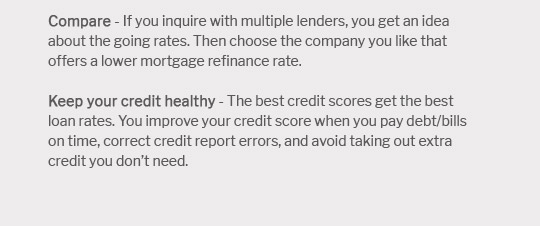 |
|||
 |
 |
 |
 |
|
|---|---|---|
 |
 |
|
 |
 |
|
 |
 |
 |
 |
Mortgage Interest Rates in Indiana: A Comprehensive OverviewThe realm of mortgage interest rates in Indiana presents a fascinating landscape, one that is as diverse and dynamic as the state itself. For prospective homebuyers and those looking to refinance, understanding the nuances of these rates is crucial. In this article, we explore the various options available, offering a comparison of popular choices while clarifying common questions that often arise. Indiana, with its blend of urban vibrancy and rural charm, boasts a housing market that caters to a wide array of preferences and financial situations. As such, mortgage interest rates in this state are influenced by multiple factors, including economic conditions, the Federal Reserve's monetary policy, and regional demand. Generally, mortgage rates in Indiana can be categorized into several types, each with its own set of characteristics.
When considering mortgage interest rates in Indiana, it's also essential to account for the impact of credit scores. Borrowers with higher credit scores generally receive more favorable rates, reflecting their lower risk to lenders. Conversely, those with lower scores might face higher rates or require additional financial backing to secure a loan. Moreover, the choice between a fixed-rate mortgage and an ARM can depend heavily on individual circumstances. For instance, in an economic climate where rates are expected to rise, locking in a fixed rate could prove prudent. Conversely, in a stable or declining rate environment, an ARM might offer initial savings that appeal to financially savvy buyers. In conclusion, while the mortgage interest rates in Indiana are subject to broader economic trends and policies, the diversity of available options empowers homebuyers to make informed decisions based on their unique needs and long-term goals. By understanding the subtle intricacies of each mortgage type, Indiana residents can navigate this complex terrain with greater confidence and clarity. https://www.zillow.com/mortgage-rates/in/
The current average 30-year fixed mortgage rate in Indiana decreased 11 basis points from 6.80% to 6.69%. Indiana mortgage rates today are 16 basis points lower ... https://www.bankrate.com/mortgages/mortgage-rates/indiana/
As of Friday, March 28, 2025, current interest rates in Indiana are 6.81% for a 30-year fixed mortgage and 5.96% for a 15-year fixed mortgage. As of October ... https://www.nerdwallet.com/mortgages/mortgage-rates/indiana
Today's mortgage rates in Indiana are 6.853% for a 30-year fixed, 5.955% for a 15-year fixed, and 7.097% for a 5-year adjustable-rate mortgage (ARM). Check out ...
|
|---|